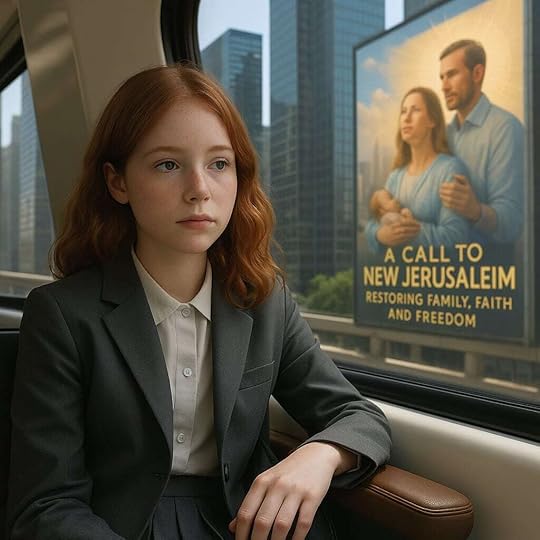How This Fiction Became Familiar

When readers ask, “Where did this world come from?” I usually point to the future. The Unborn Child Protection Act series is speculative fiction, built from imagined legislation and sharpened political trends. But I didn’t start with the future. I started with the present. And I traced it back to the moment the protections fell away.
June 24, 2022, was the day the United States Supreme Court overturned Roe v. Wade. It was also the foundation of The Fatherhood Mandate. From there, I didn’t have to invent much. I followed the real-world events: the halting of abortion services in Wisconsin, the legislature’s refusal to act, and the legal uncertainty that followed. I looked at laws that had been dormant for over a century and watched them quietly return to power. Then I asked the next question. What happens if nothing interrupts this?
In the world of The Fatherhood Mandate, Wisconsin never repeals its 1849 abortion statute. Instead, lawmakers amend Act 292 and the state constitution. Life is defined at conception. A fetal heartbeat triggers legal protection. Unmarried women who become pregnant, and are considered to be a threat to their unborn child, are monitored, detained, or removed from their homes. The father—however he’s defined—is held legally and financially responsible for their offspring through age twenty-one. Consent, circumstance, and relationship history are irrelevant.
This version of “personal responsibility” doesn’t care about context. It enforces a moral expectation through legislative structure. And the system is designed to punish deviation rather than understand it.
By the time I started work on The Motherhood Mandate, the consequences are widespread and institutional. Cancer treatments are delayed until after delivery. Emergency procedures require legal justification. Once a fetal heartbeat is detected, the pregnant woman is no longer the primary patient. She is a vessel to be monitored. Her safety is considered, but rarely prioritized. Women bleed out in hospital parking lots and beg for treatment.
These changes aren’t born from a single law. They come from a pattern of decisions—judicial, legislative, and cultural—that slowly shift the legal definition of personhood. When a government is allowed to define when life begins and whose life matters more, it also gains the ability to shape parenthood, consent, and adulthood. And it will. Quietly, at first. Then quickly, with very little pushes back.
The books contain laws you won’t find in the real world—yet. But they’re all built from language that has appeared in courtrooms, on ballots, and in public discourse. One such law requires unmarried parents to live together during late pregnancy and through the child’s sixth month. Another raises the legal age of adulthood to twenty-one, stripping voting rights and decision-making from teenagers who are already parents themselves. None of these laws are fantasy. They are extensions of arguments already being made in public.
Some of the earliest plot points I wrote never needed to be changed. Others were softened, not for believability, but because the real world had already outpaced them. I originally structured this series around a slower legal decline, with the most extreme outcomes unfolding in the early 2030s. I assumed the Supreme Court would uphold a 15-week abortion ban in Dobbs v. Jackson Women’s Health Organization. I never imagined they would overturn Roe outright.
When that ruling came down in 2022, I had to rewrite the entire timeline. What I thought would take a decade began unfolding in months. I moved key legislative shifts and court cases into the mid-2020s, not to dramatize them, but to match what was already happening. Fiction didn't need to lead. It needed to reflect.
When people ask what I cut from these books, I sometimes hesitate. Not because I don’t remember, but because the answer is almost nothing. The arc of the laws remained the same. The systems of control remained the same. All I did was give them a name, a date, and someone to suffer under them.
This series isn’t prophecy. It’s documentation of a possible path. And the further we go, the more familiar it looks.
If you’ve read The Fatherhood Mandate or The Motherhood Mandate, and it made you pause, that’s the point. These stories were written to reflect the slow drift of law away from protection and toward possession. What you’re seeing is a world where that drift wasn’t interrupted.
And if you're seeing pieces of that world already, you're not imagining it.



